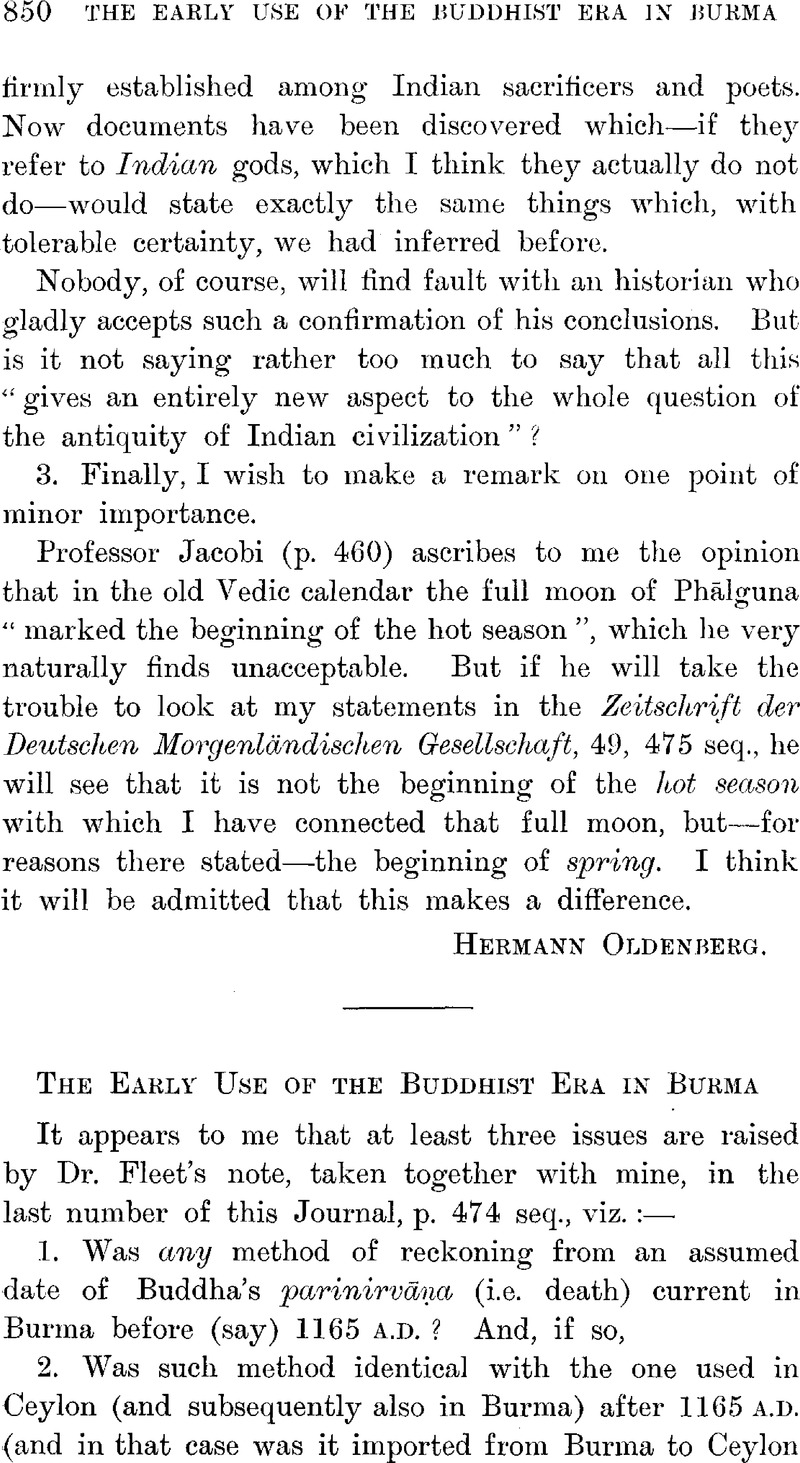No CrossRef data available.
Published online by Cambridge University Press: 15 March 2011

page 852 note 1 The original gives these dates (the second one twice over) in words, not in figures.
page 854 note 1 There are also two longer ones, in Pāli, set up by the king himself, which apparently are parts of one record. The second is dated in 503 Burmese Era (ibid., pp. 73–9).
page 854 note 2 As I have had no experience in the verification of Indian dates I submitted these particulars to M. A. Barth, of Paris, through my friend M. A. Cabaton. M. Barth very kindly took the trouble to make the necessary calculations, and informs me that in the month in question, in 1125 a.d., the moon entered this nakṣatra after sunrise on Friday, the 20th November. Assuming, then, that the year is really 1125 a.d., and that the months are amānta, as in the modern Burmese reckoning, it would seem that there are no discrepancies in the legible data and that this is really the date of the inscription. If the era of this record is not the Burmese one, I know of no other likely to have been used in Burma at this time which would be any more compatible with Dr. Fleet's position. The Śaka era and any parinirvāṇa era would be equally objectionable. If it were the former we should (having regard to the contents of these inscriptions) have to make the numerals 1087, and if the latter, 1687, instead of 487. The former would work out at 1165 a.d. and the revised parinirvāṇa era at 1144 a.d. If it is the last-named or some other parinirvāṇa era, cadit quæstio. Besides (M. Barth informs me) none of these years (except 1125 a.d. with amānta months) fulfil the given conditions of month, weekday, and nakṣatra.
page 854 note 3 The original gives this date in words, not in figures.
page 854 note 4 Or the family of the prince “Aditsa” mentioned by Phayre, (History of Burma, p. 20) as a legendary ancestor of the Pagān kingsGoogle Scholar.